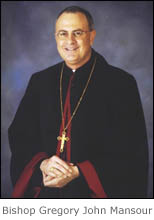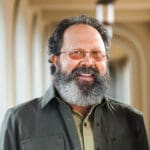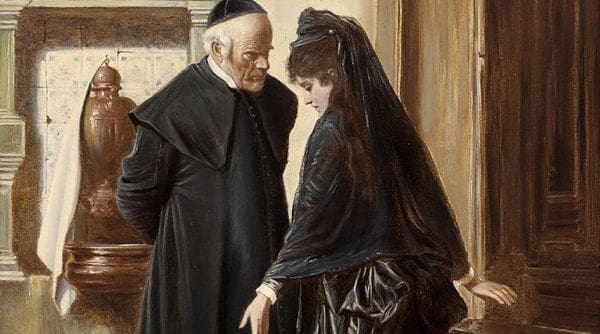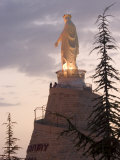Bishop’s Perspective on Spiritual Direction
(Part I of III)
Dear Catholic Spiritual Direction Friends,
A few of you know that I travel a great deal between Connecticut and Colorado. When I am in Connecticut my home parish is Our Lady of Lebanon, a parish of the Eparchy of Saint Maron in Brooklyn. I have had the opportunity to encounter Christ in Churches in Jerusalem, Rome and the United States and have participated in the liturgies of many different traditions within the Catholic Church. One of the most beautiful of these traditions is the Maronite rite. I strongly recommend that those among you who appreciate the depth and riches of our liturgical traditions attend at least one Maronite Mass. In this tradition you will discover there are at least three different languages commonly spoken, Aramaic (the native tongue of Christ), Arabic, and English. As well, most of the Mass is sung in the deeply moving chant tradition of the East. Maronites have cherished and preserved the riches of their liturgy in a way that is often hard to find in the west.
During a recent visit to Our Lady of Lebanon I came across the pastoral writings of Bishop Gregory John Mansour of the Eparchy of Saint Maron Brooklyn. I was moved by his honest and thoughtful exploration of prayer and the liturgy and the sacrament of penance. It was immediately obvious that Bishop Mansour is a man of prayer and depth. After a brief correspondence he agreed to write a few posts on the topic of spiritual direction. Below you will find the first of three. To find out more about Bishop Mansour and the beauty of the Maronite tradition, follow the links at the bottom of this post. Enjoy!
Seek Him – Find Him – Follow Him,
Dan
Spiritual Direction — A Bishop’s Perspective (Part I of III)
 My spiritual director, Father John King, S.J., died June 13, 2008, while I was in Lebanon. He suffered from a brain tumor that took him in two months. I visited him in the hospital and then in the Jesuit infirmary at Fordham University. Two weeks before he died, during my last visit to him, I asked if his right hand still worked. “Are there any more blessings and pardon to be found there?” I placed his hand on my head; he smiled and thanked me for “being there” for him. John’s death was one more opportunity to “review my life,” as he would say each time he would give me absolution.
My spiritual director, Father John King, S.J., died June 13, 2008, while I was in Lebanon. He suffered from a brain tumor that took him in two months. I visited him in the hospital and then in the Jesuit infirmary at Fordham University. Two weeks before he died, during my last visit to him, I asked if his right hand still worked. “Are there any more blessings and pardon to be found there?” I placed his hand on my head; he smiled and thanked me for “being there” for him. John’s death was one more opportunity to “review my life,” as he would say each time he would give me absolution.
Beyond that of my parents, family, and friends, along with the ministry of Peter and the Church’s spiritual heritage, spiritual direction has been the most defining influence in my life. All during my seminary, priesthood, and service as bishop, I have seen my spiritual director on a consistent basis each month. Wise priests were my confessors and confidants. I hid nothing from them, and in each session I was challenged, comforted, advised, and – by the grace of God – absolved of my sins.
“Spiritual direction is not necessary for the ordinary Christian. But where there is a special mission or vocation a certain minimum of direction is implied by the very nature of the vocation itself.” These are the thoughts of Father Thomas Merton, a Trappist monk, in his superb little book Spiritual Direction and Meditation. For those called to priesthood or religious life, spiritual direction is essential, but I would add that it is also essential for those who want to be more accountable, more honest with themselves, more generous with God and others, and more at peace with God and themselves. It may “not be necessary for the ordinary Christian,” but anyone who loves God and desires to do his will can benefit from this ancient discipline.
In my next post we will briefly explore the purpose of spiritual direction.
+Bishop Gregory John Mansour+
Bishop Mansour is the Bishop of the Eparchy of Saint Maron of Brooklyn within the Maronite rite of the Catholic Church. Click here to learn more about Bishop Mansour, and the riches of the Maronite Catholic tradition.
+
Art for this post on a Bishop’s perspective: photography provided by Dan Burke, unknown provenance. Feature image art: Ein ernstes Gespräch (A Serious Conversation), Ludwig Johann Passini, by 1903, PD-US author’s life plus 100 years or less, Wikimedia Commons.






